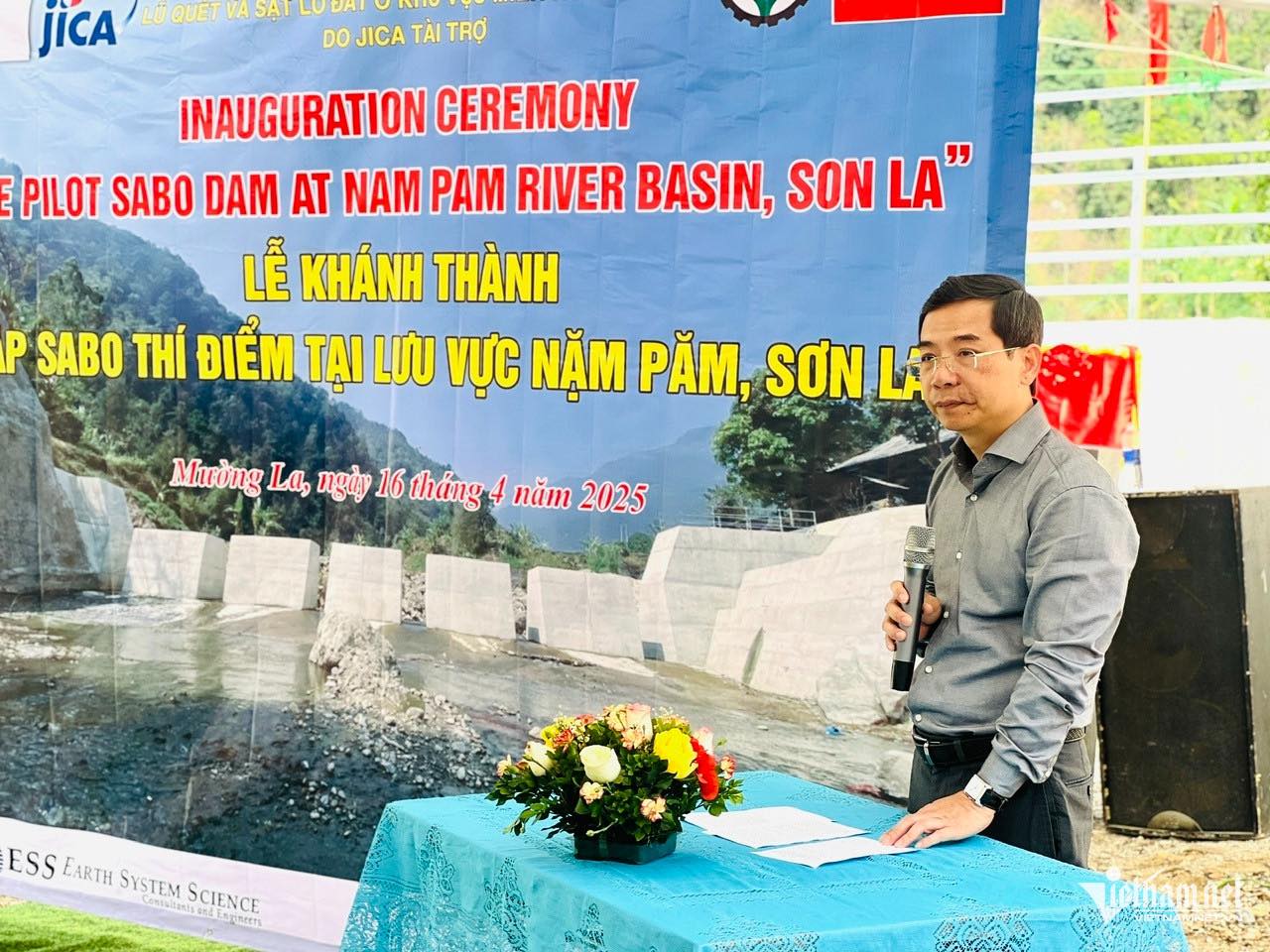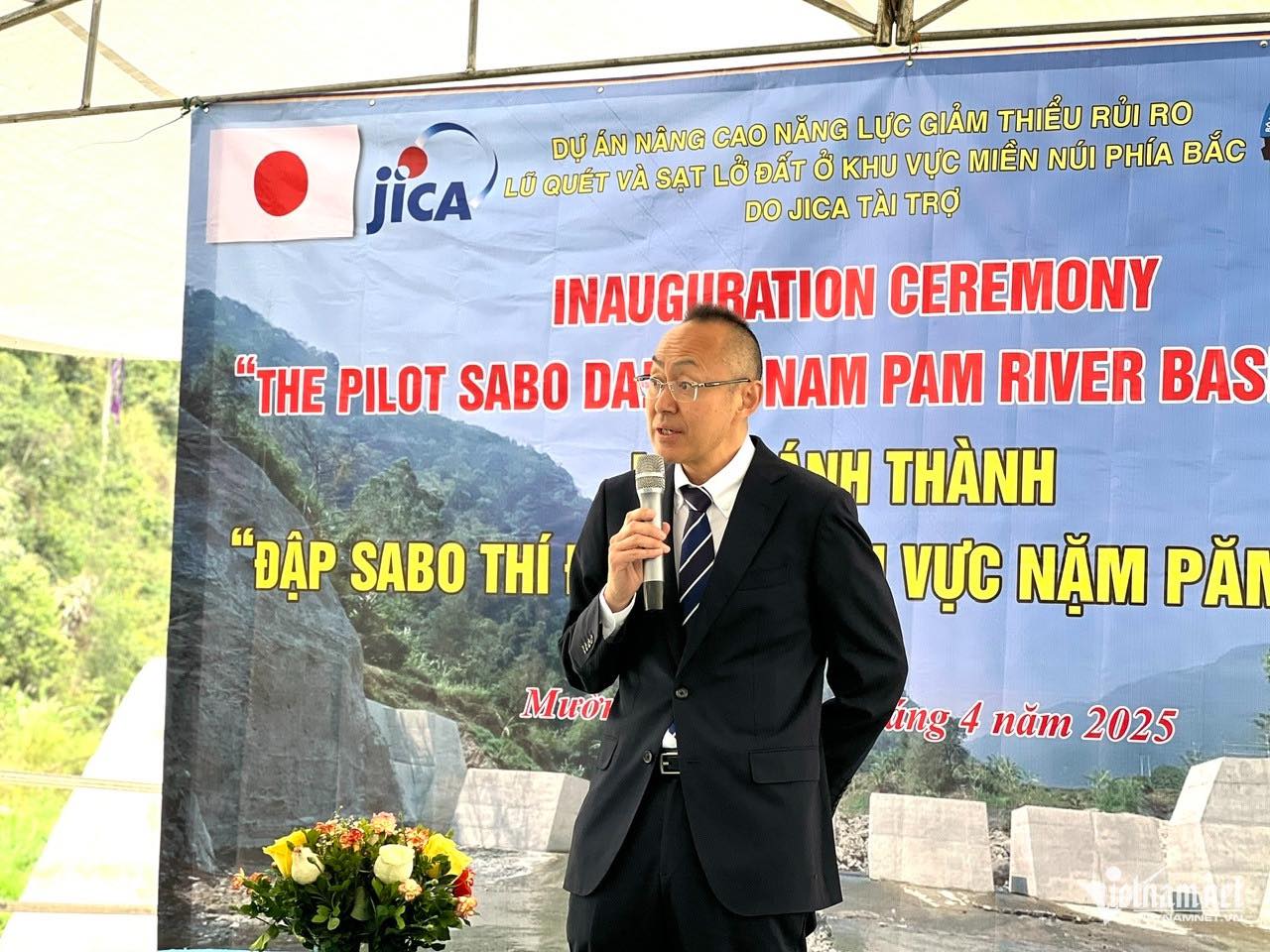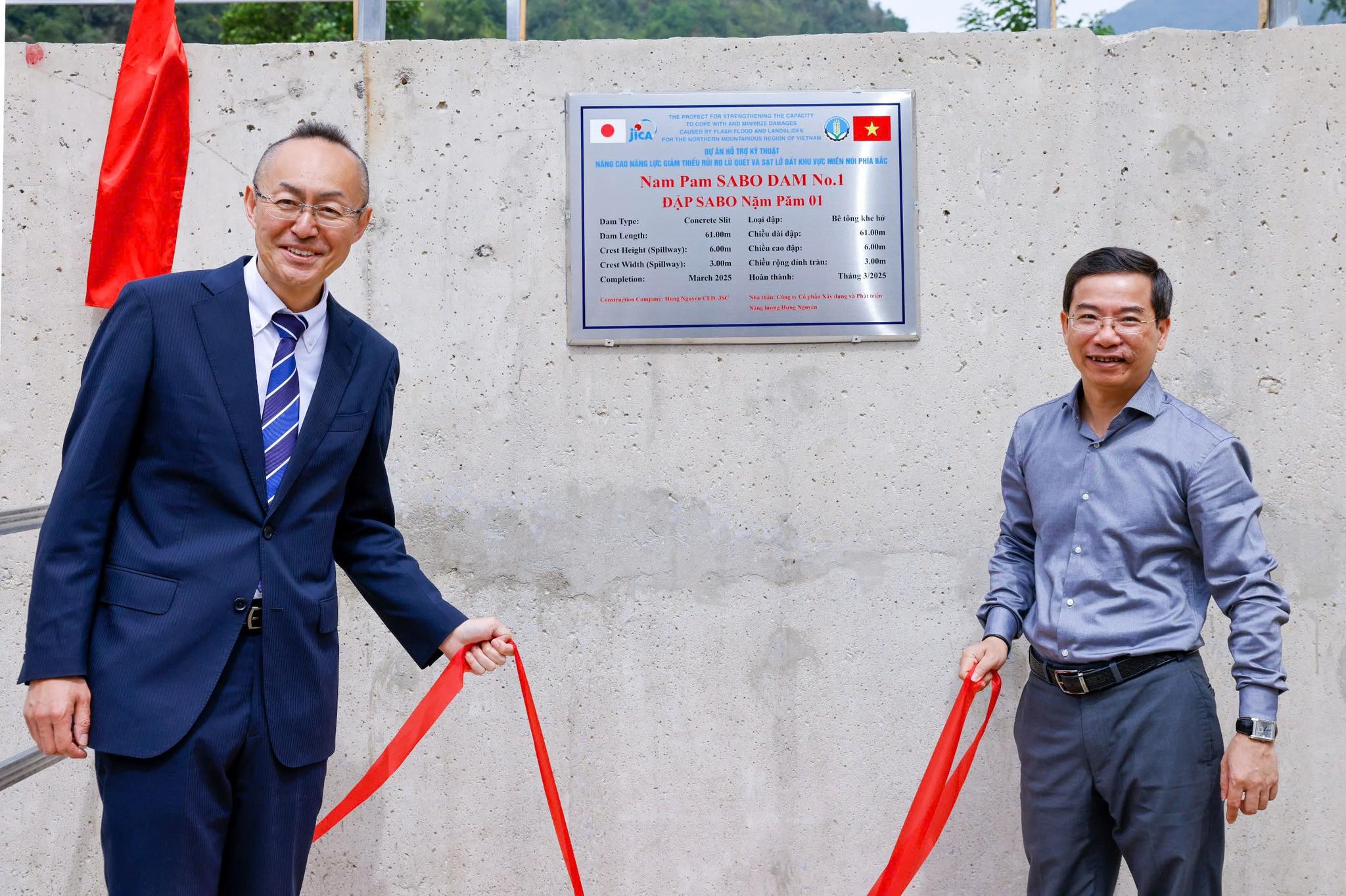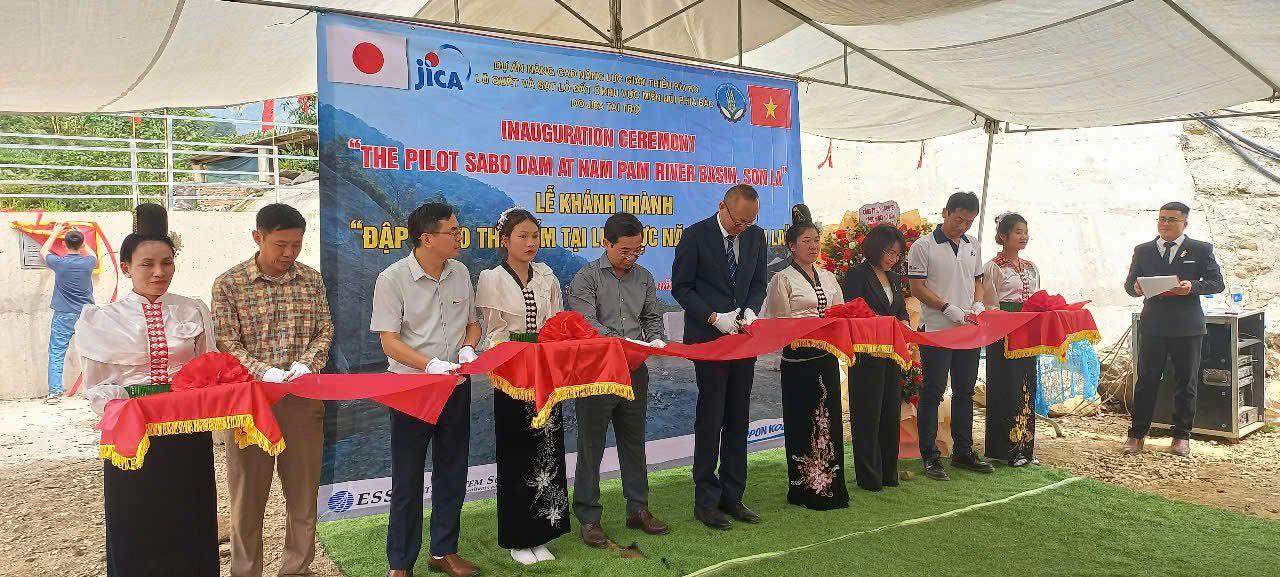On the morning of April 16, in Muong La district, Son La province, the Vietnam Disaster and Dyke Management Authority (VDDMA) under the Ministry of Agriculture and Environment, in coordination with the Son La Department of Agriculture and Environment and the JICA Vietnam Office, held the inauguration ceremony for the pilot Sabo dam at the Nam Pam river basin.
This is the first Sabo dam of its kind in Vietnam, constructed as part of the capacity building project funded by JICA. The Sabo dam, a widely used structure in Japan and other countries, is typically built in the upstream of steep rivers with fast currents. It helps trap debris, rocks, and driftwood, thereby preventing damage in downstream areas.

Speaking at the ceremony, Mr. Nguyen Truong Son, Deputy Director General of VDDMA, emphasized that the Sabo dam in the Nam Pam stream basin serves as a “visual pilot model”, designed and constructed according to Japanese standards. The dam is expected to protect 28 households, one kindergarten, and one cultural house located on the left bank downstream of the dam. However, Mr. Son noted that as a standalone, small-scale pilot project, the dam’s effectiveness may be limited.
He added that the Ministry of Agriculture and Environment has proposed continued support from the Japanese Government to develop a comprehensive Sabo dam system across the Nam Pam basin. This system could serve as a model for Vietnam to evaluate the effectiveness of Sabo dams and attract further investment to expand this solution to other high-risk areas.

Mr. Kobayashi Yosuke, Chief Representative of JICA Vietnam, highlighted that the inauguration marks a new milestone in Vietnam–Japan cooperation in landslide and flash flood risk reduction. He acknowledged that a single dam is not enough to significantly control sediment-laden floodwaters and expressed hope that this pilot in Son La would provide a reference for the Vietnamese government to develop technical standards for Sabo dams at Nam Pam and other vulnerable sites.
The Nam Pam Sabo dam construction started in September 2024, after the rainy season in Son La, and was completed in nearly seven months with a total cost of about 55 million yen (nearly VND 10 billion). Built to Japanese standards, the dam is a gap-type concrete structure, 61 meters long, 3 meters wide at the crest, and 9 meters high.

The construction process included foundation inspections, excavation, concrete pouring, slope protection, and backfilling. The quality was strictly monitored through slump tests and continuous strength testing of the concrete on-site.
Ms. Le Thi Thu Hang, Deputy Director of the Son La Department of Agriculture and Environment, stated that the pilot construction of this structural solution (Sabo dam) is a significant milestone, marking progress in disaster prevention and the protection of people's lives and property in the province.

After the project concludes, the provincial department will coordinate with relevant technical agencies to take over the infrastructure, and ensure the human resources and funding necessary for its operation, management, and maintenance.
To improve sediment control across the Nam Pam basin, the department has proposed that the Japanese Government and the Ministry of Agriculture and Environment consider investing in the completion of 12 additional dams outlined in Output 3 of the project. They also called for the development of national standards, regulations, and procedures for Sabo dam construction in Vietnam.



Sabo dams have proven to be highly effective in Japan in controlling debris flows and preventing driftwood damage to downstream communities. There are two main types of Sabo dams: closed-form and open-form.
Closed-form Sabo dams have solid walls that obscure the upstream from downstream view. These dams slow the water flow by accumulating sediment and flattening the riverbed, which reduces the velocity of flash floods.
Open-form Sabo dams, on the other hand, have openings that allow smaller debris to pass through while retaining larger rocks and logs during flash floods. These structures are designed to mitigate the impact of extreme sediment-laden flow on downstream settlements.